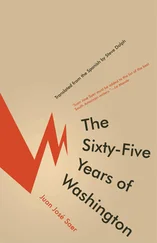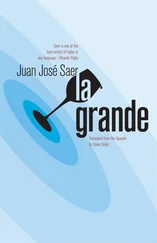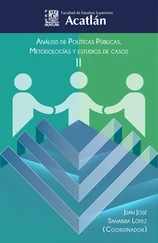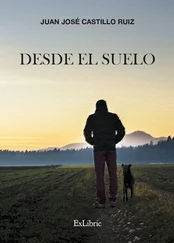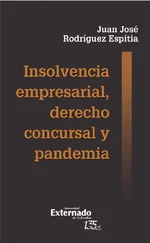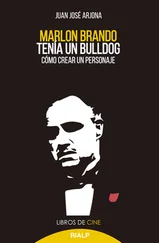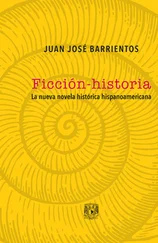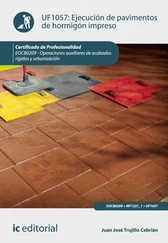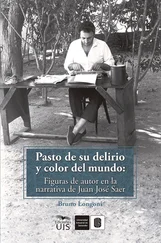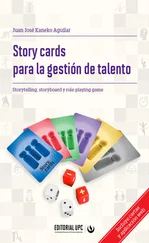Juan José Saer - Scars
Здесь есть возможность читать онлайн «Juan José Saer - Scars» весь текст электронной книги совершенно бесплатно (целиком полную версию без сокращений). В некоторых случаях можно слушать аудио, скачать через торрент в формате fb2 и присутствует краткое содержание. Год выпуска: 2011, Издательство: Open Letter, Жанр: Современная проза, на английском языке. Описание произведения, (предисловие) а так же отзывы посетителей доступны на портале библиотеки ЛибКат.
- Название:Scars
- Автор:
- Издательство:Open Letter
- Жанр:
- Год:2011
- ISBN:нет данных
- Рейтинг книги:5 / 5. Голосов: 1
-
Избранное:Добавить в избранное
- Отзывы:
-
Ваша оценка:
- 100
- 1
- 2
- 3
- 4
- 5
Scars: краткое содержание, описание и аннотация
Предлагаем к чтению аннотацию, описание, краткое содержание или предисловие (зависит от того, что написал сам автор книги «Scars»). Если вы не нашли необходимую информацию о книге — напишите в комментариях, мы постараемся отыскать её.
explores a crime committed by a laborer who shot his wife in the face; or, rather, it explores the circumstances of four characters who have some connection to the crime. Each of the stories in Scars explores a fragment in time when the lives of these characters are altered, more or less, by a singular event.
Scars — читать онлайн бесплатно полную книгу (весь текст) целиком
Ниже представлен текст книги, разбитый по страницам. Система сохранения места последней прочитанной страницы, позволяет с удобством читать онлайн бесплатно книгу «Scars», без необходимости каждый раз заново искать на чём Вы остановились. Поставьте закладку, и сможете в любой момент перейти на страницу, на которой закончили чтение.
Интервал:
Закладка:
A dark, crackling blur emerges from the fog, where I imagine the riverbank to be.
A piece of gray meat, surrounded by boiled potatoes, in the dish, on the table, the murmur of Elvira’s skirt as she disappears into the kitchen.
I drive down San Martín, toward the city center. Myriad colors from the neon signs form brilliant, momentary images through the windshield, where the thick rain explodes and distorts my vision before the wiper blades sweep away the water and leave the glass clear again.
The gray sentry box appears and disappears quickly into the fog at the mouth of the suspension bridge.
I turn on the light.
The white marble staircase, descending from the third floor, is illuminated.
I sit up and look around the room. The white walls don’t glow because the light from the nightstand doesn’t reach them, except for the cone of pale light that softly illuminates the wall where the headboard rests. I remove the spoon from the glass and take a drink of water. I turn off the light again and close my eyes.
I see the trees in the park and the lake flashing suddenly and then disappearing into the foliage. I see the marble courthouse stairs again, the checkerboard lobby, the black and white tiles, from the railing on the third floor, the illuminated corridors of the arcade, the dark windows in the train station, the white marble stairs in the courthouse again, the checkerboard, the black and white tiles, the trees in the Plaza de Mayo, palms and orange trees. The oranges, yellowing among the green leaves polished by the rain.
Ángel enters the La Región building quickly, waves, and disappears.
I see the chief fingering the obsidian medallion.
In the open space walled in by trees and rocks, the gorillas wander and pause, resting their palms on their backsides, bewildered, gazing at the mute horizon.
The gray sentry box appears and disappears into the drifting fog. I see the profile of the uniformed gorilla, cut in half by the edge of the door.
Gorillas cough and hunch over as they smoke on the bus station platforms. Their pale hands and faces shift in the early penumbra.
From the third floor, the courthouse lobby looks empty. The black and white tiles are clean and polished. The white staircase descends, forming a wide curve, toward the second floor.
The windshield wiper sweeps away fine droplets of rain that fall on the glass and distort the bright lights of the neon signs as I move north up San Martín.
I wake up. For a moment, I don’t realize that I’m awake. The room is gray. Then I turn on the light and look at the clock on the night stand. It’s two. I get up and go to the bathroom. I see gray through the skylight. I undress, defecate, and then take a hot shower. Then I go to my room, wrapped in my bathrobe, dry off, and get dressed. In the long mirror over the bureau I examine my face. My beard has grown in two days. After dressing I go back to the bathroom and shave slowly. The electric razor buzzes, monotonously, quietly. I pass the back of my hand softly over my face, against the grain of the hair. Then I unplug the razor, put it away, and leave. I find Elvira in the dining room. “Your mother called,” she says. “I’ll call her in a minute,” I say. “Judge,” Elvira says, “It’s three in the afternoon. Will you eat?” I tell her to bring some soup to the study and I go up. I open the curtains and a gray, tense light filters into the study.
I dial my mother’s number. I hear her voice. “It’s been two days since you’ve come to see me,” she says. “I’ve been very busy Mamá,” I say. “Are you alright?” she says. “Perfectly fine. Never better,” I say. “You’ve heard the news about your wife?” she says. “I haven’t, nor do I want to,” I say. “She’s come back to the city, to stay this time. I heard it at the club, yesterday afternoon, that she had been showing up with some new man, all smug,” mother says. “That doesn’t interest me, Mamá,” I say. “And she gets drunk, Ernesto. She gets drunk and goes around talking garbage about our family,” Mother says. “It can’t be her,” I say. “How can it not be her?” Mother says. “Even after she walks out you still have the nerve to defend her.” “I’m not defending her,” I say. “I’m just saying it might not be her.” “So you’re saying the girls don’t know my daughter-in-law when she was married to my son for eight years?” Mother says. “I don’t know why she would come to this city,” I say. “You never know anything,” she says. “How’s Father?” I say. “The same,” Mother says. “Well,” she says, “it’s about time you remembered that you have a mother and come visit me. I don’t even remember your face.” “It’s the same as always,” I say. “Someone from the club might come to your house soon,” Mother says. “You might pay him the two months I owe.” “Do you need anything?” I say. “Nothing, for now,” Mother says. We say goodbye and hang up.
Almost at once, Elvira arrives with the soup. It’s the same as always, a thin broth, steaming and golden. I sit down on the twin sofa, my back to the window, and drink the soup slowly. Then I set the empty dish on the desk, walk to the window, and gaze out at the park. The gray light forms a halo over the trees above the ground that slopes slowly downward to the lake. The paths are dark and covered in a decaying bed of leaves. Bare tree branches crisscross in the green foliage. A pair of gorillas sit on a flat stone bench, their backs to the window, gazing at the lake. The female’s head is resting on the male’s shoulder. They are still. Suddenly they stand up and start walking toward the lake, then they turn right, following the path, and then they disappear.
I take up the corrections to the translation until it starts to get dark. Then I close the curtains and turn on the desk lamp. I work briefly by the lamplight, which casts a bright, warm circle over the desk and the surrounding area. The rest of the room is in a kind of half darkness. Then I get up, put on a blazer, and go to the kitchen. “Is everything ready for tonight, doña Elvira?” I say. “It’s getting there,” Elvira says. “I’m going out,” I say. “I’ll be right back.” I go downstairs and out into the street. I’m submerged in cold, blue air. Very soon it will be dark.
I have to turn the key several times before the engine starts. After it turns over I wait a moment for it to warm up. Then I put it into first and start driving slowly. At the corner I turn right, and the car begins to shudder and vibrate as it moves over the rough cobblestones. At the third intersection, the Plaza de Mayo appears to my right, the broad facade of the courthouse to my left. I turn onto the Avenida del Sur, heading west. The avenue is illuminated with mercury gas lamps that cast a whitish, cold light from the sidewalks toward the middle of the street. The Avenida del Oeste is lit up with the same lamps hanging from curved columns that extend toward the street. Beyond the flowerbeds in the center island, to my left, are the regimental gardens, and then, also to the left, the yellow facade of the wholesale market, and farther on the Avenida cinema, completely dark, and then the rows of one- and two-story houses until I reach the boulevard. I turn right, driving slowly to the east. By the time I reach the first traffic light, after passing the yellow facade of the university, with its green window frames, it is already dark. I have to wait at the traffic light for the red light to turn off and the green light to turn on, and as I move forward, after passing the traffic light, the train tracks make the car shudder slightly. The mill is to my left. The second traffic light doesn’t stop me — the light changes from green to yellow just as I’m crossing the intersection — and I accelerate slightly. The train station lobby is illuminated, as is the ground outside the tall windows that cast patches of light into the dark air. I cross the tracks and reach the roundabout by the suspension bridge. The gray sentry box is lit up inside, and the outline of a uniformed gorilla interrupts the passage of light through the doorway. I turn onto the old waterfront, which is practically deserted — I’ve passed only two cars on the way to the suspension bridge — and accelerate when I touch the smooth asphalt of the new waterfront, lined with broad jetties. The red tile roofs of the villas on the waterfront stick out between the black foliage. Every so often, a half-obscured light illuminates the wet leaves. I reach Guadalupe, circle the roundabout, and start driving in the opposite direction. Now the river is to my left. I can’t make it out. In the distance, the tall columns of the suspension bridge can be distinguished clearly by the four red lights that blink on and off. I’m alone on the avenue. The headlights illuminate a section of the pavement, and when I switch them on, the high beams cause the surface of light to sort of jump and expand abruptly forward and to the sides. When I lower the lights, its surface area diminishes, illuminating only the pavement in front of the car again. Inside the car, the red dashboard light reaches my face weakly. Every so often I can see a fragment of my face reflected momentarily in the rearview mirror, which fills up with light suddenly when a car approaches and passes me quickly. I watch its rear lights, two red dots, shrink until they disappear. Then I reach the old waterfront again and slow down now that the asphalt is less smooth and covered with patches, potholes, and bumps. When I reach the mouth of the suspension bridge, a sky-blue truck with the inscription Molino Harinero S.A. on the bed exits quickly from the bridge and forces me to stop abruptly. The truck stops abruptly as well. Inside the dark cabin I can just make out the silhouette of a man behind the wheel and a woman with a girl sitting on her lap. The truck starts up again and quickly disappears up the boulevard. I continue straight ahead and then circle the plaza next to the waterfront and turn onto the harbor road, which crosses at a diagonal toward the city center. The avenue is dark despite the white spheres of the streetlights, shorter than the palms, whose leaves flash momentarily. And except for the complex structure of the central power plant, which is covered with lights, nothing is visible but dark walls half-obscured by the foliage. On the other side, to my left, loom the silver petroleum tanks of the port warehouses and the operations switchyards of the port railway. I reach the city center, pass the dark post office, the sides and deep passageways of the bus station, and then I turn right, drive two blocks, and turn left onto San Martín, to the south. The street is illuminated, but practically deserted. Then comes the darkened municipal theater, and a few blocks later the traffic light at the Avenida del Sur. I stop, waiting for the light to change from red to green. When I start, after the light has changed, I see the city hall approach, and sliding backward, past the right side window, the east end of the Plaza de Mayo, and beyond, between the trees, the dark, blurred facade of the courthouse. I cross the intersection — the city hall plaza is left behind — drive two and a half blocks, and after passing the white arches of the Franciscan convent and the tree line of the southern park, I stop the car next to the sidewalk, in front of my house, and turn off the engine. I turn off the lights as well. Then I get out, lock the door, and go inside. I haven’t finished climbing the stairs when the telephone rings. I hurry into the study and pick up the receiver at the same moment as I turn on the desk lamp.
Читать дальшеИнтервал:
Закладка:
Похожие книги на «Scars»
Представляем Вашему вниманию похожие книги на «Scars» списком для выбора. Мы отобрали схожую по названию и смыслу литературу в надежде предоставить читателям больше вариантов отыскать новые, интересные, ещё непрочитанные произведения.
Обсуждение, отзывы о книге «Scars» и просто собственные мнения читателей. Оставьте ваши комментарии, напишите, что Вы думаете о произведении, его смысле или главных героях. Укажите что конкретно понравилось, а что нет, и почему Вы так считаете.

